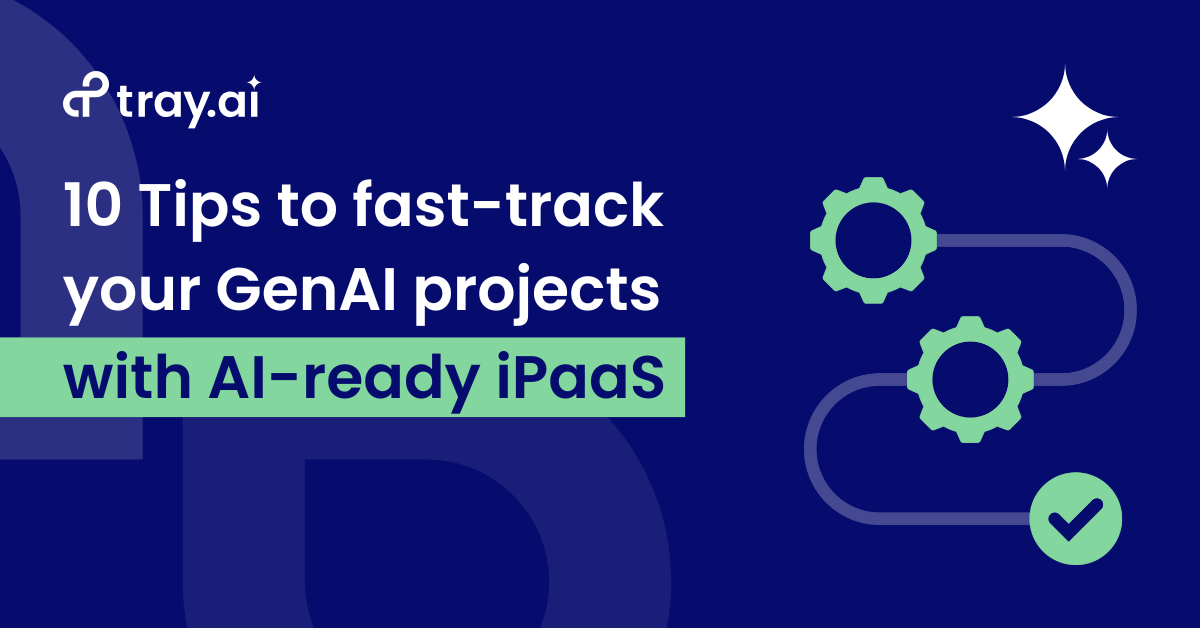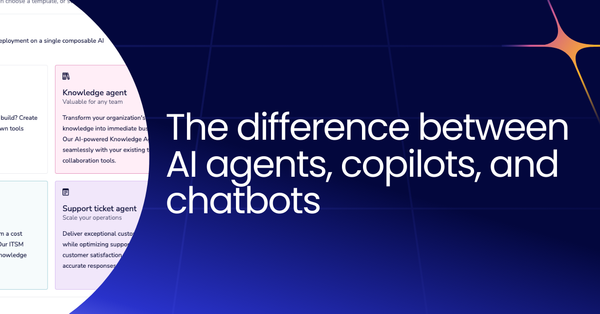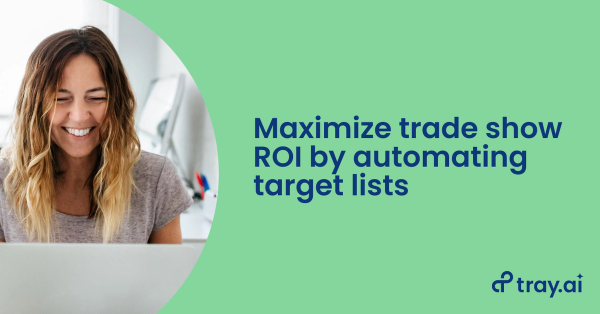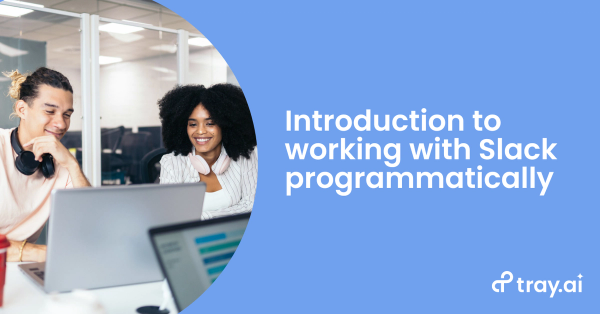The experimental phase of generative AI and large language models (LLMs) is over. We’ve seen the slideware. We’ve heard the pitches. Now, it’s time to deploy.
But here’s the thing: LLMs can be a black hole for time and resources if you don’t approach them strategically. So here are 10 tips to help you do just that. Think of them as your guide to accelerating your LLM app development in a safe and flexible way (and with fewer missteps.)
Start with a strong integration strategy
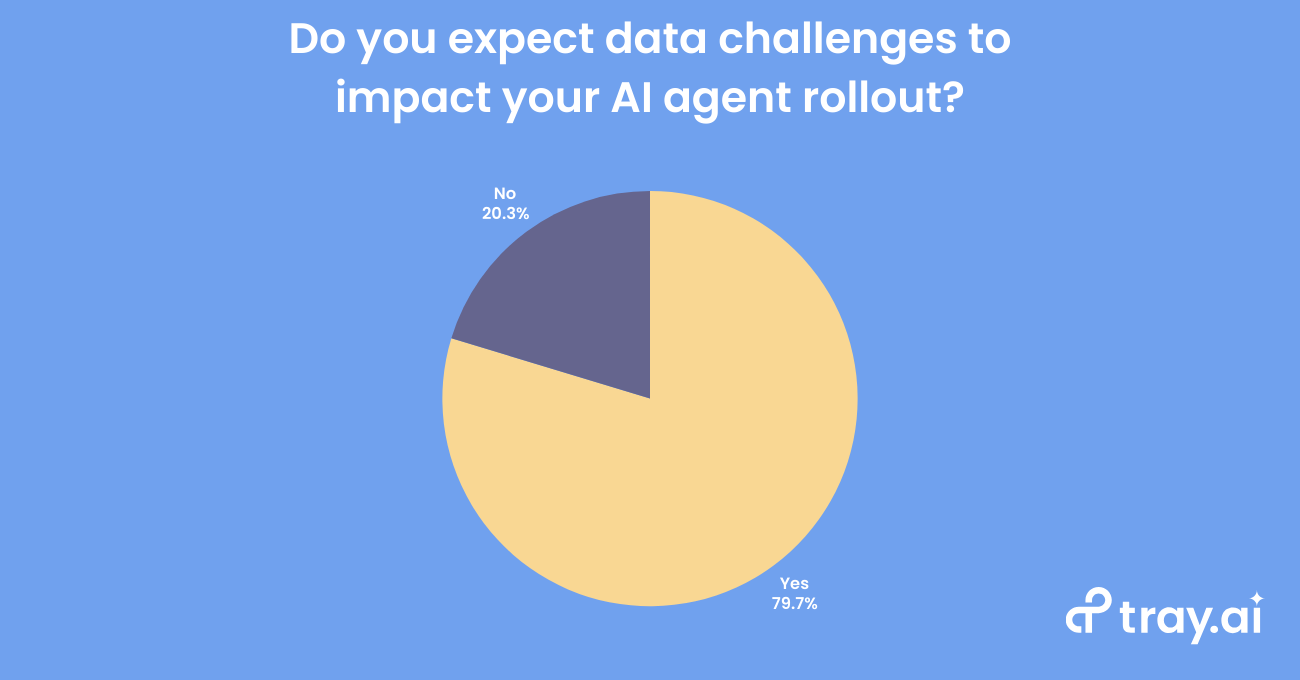
Deploying AI presents many new challenges for enterprises, but at its core, it’s an integration problem. Integration is the foundation for any successful LLM app. Whether you’re incorporating pre-trained models or building custom ones, none of it matters if you can’t seamlessly connect them to your existing tech stack. Nearly 80% of organizations cite data challenges—including integration with legacy systems—as a key blocker to AI deployment.
Tip #1: Use an AI-ready iPaaS to simplify integration. By unifying data pipelines, APIs, and applications in a single, composable platform, you can streamline connectivity and accelerate development.
Avoid the “build it and they will come” pitfall
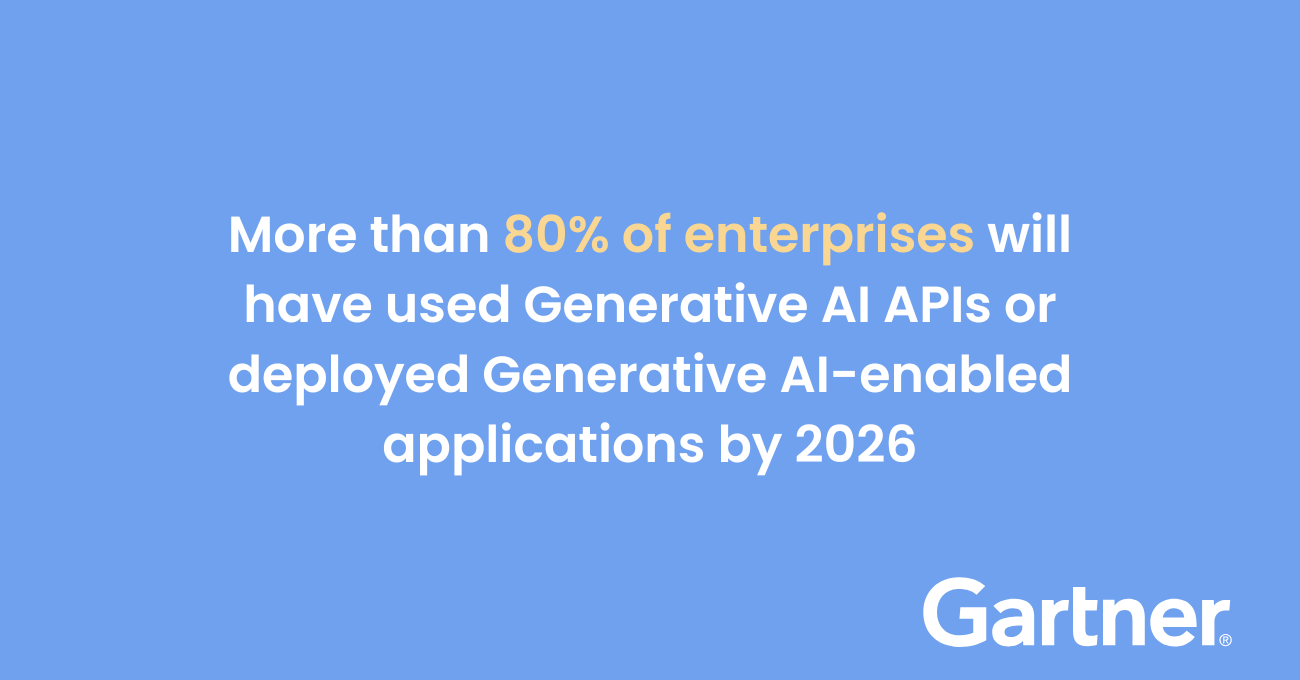
Business teams are demanding AI Agents, but the focus now must shift to adoption. Too often, organizations invest heavily in prototyping while neglecting the transition to production. The result? A growing backlog of promising projects that never make an impact. According to Gartner, more than 80% of enterprises will have deployed Gen AI-enabled apps by 2026, but adoption remains a critical hurdle.
Tip #2: Prioritize use cases with clear ROI and leverage an AI-ready iPaaS to move them into production quickly. With this approach, your AI initiatives deliver value instead of gathering dust.
Bridge the old and new tech stacks
As the saying goes, “Out with the old, in with the new.” When it comes to AI projects, you’ll need to get used to saying that every month.
Integration complexity remains the top obstacle to scaling AI, with 38% of IT leaders citing it as their biggest challenge. While your traditional tech stack—ERP, CRM, databases—has remained stable for years, your AI stack is evolving at lightning speed. Just look at technologies like ChatGPT, Llama, and Pinecone, which barely existed two years ago. Now imagine two years from now—will your stack be ready?
Tip #3: Ensure it is by using an AI-ready iPaaS to build seamless workflows between your traditional and AI stacks. Consistent, effortless data flow will be the foundation for keeping up with AI innovation and staying ahead of the curve.
Manage data bottlenecks
Your AI agents or AI-powered apps are only as good as the data fueling them. Yet, data bottlenecks slow progress. Whether it’s unstructured data like invoices or structured data from your ERP, managing these inputs effectively is key.
Tip #4: 80% of the time spent on AI projects goes toward data preparation. An AI-ready iPaaS with built-in support for diverse data types can dramatically reduce this burden, helping you focus on delivering results instead of wrangling data.
Design for adaptability
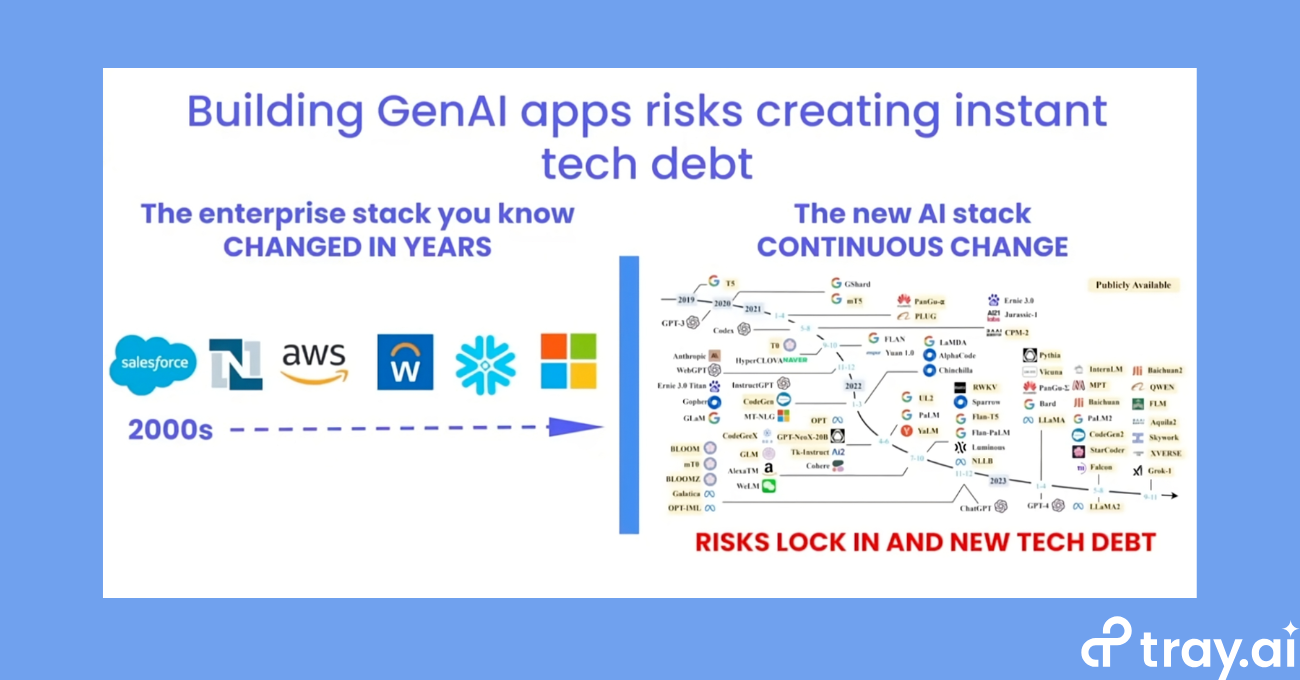
Here’s a motto to live by: What works today may not work tomorrow. Technical debt — once a long-term issue — now accrues in months, not years, due to the rapid evolution of AI technologies. The LLMs and databases you use and rely on today could be totally outdated in six months time. In fact, 86% of organizations report having to make major upgrades or overhauls to their tech stacks to support AI deployment. So how can you plan for that?
Tip #5: Build composable, reusable workflows with an AI-ready iPaaS to ensure your apps remain adaptable and future-proof. Flexibility is your best defense against the pace of AI innovation.
Make security and governance a priority
Even in the wild west of AI, one rule is clear: responsible data handling is non-negotiable. Whether it’s tokenizing data or maintaining audit trails, security and compliance must always be at the forefront of AI development. It’s no surprise that 57% of organizations cite data privacy as their top concern when deploying AI.
Tip #6: Avoid compliance risks by using an AI-ready iPaaS with built-in governance features. These tools help you scale AI initiatives confidently while keeping security and privacy measures intact.
Harness AI for development efficiency
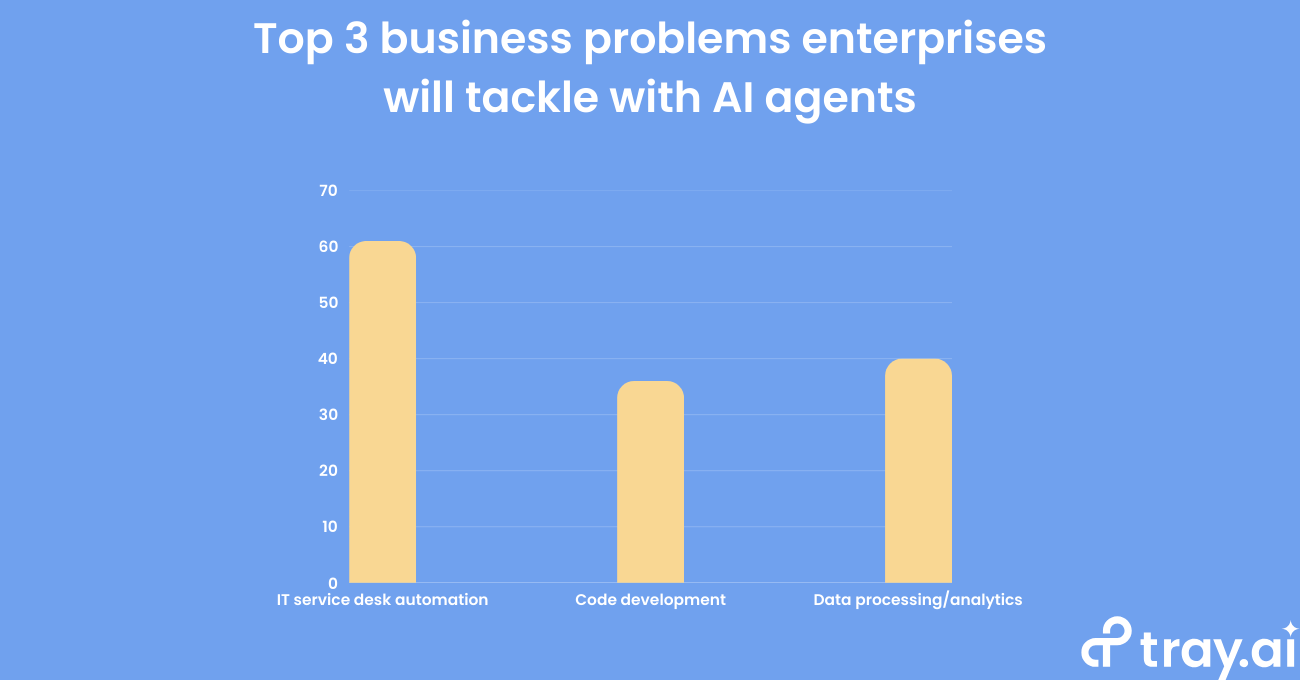
The true value of AI lies in working faster and smarter. When developing AI-powered apps, why not use AI to build them better and faster? According to our survey, 36% of teams plan to prioritize speeding up development with AI.
Tip #7: Many AI-ready iPaaS platforms offer AI-enhanced features like co-pilots for integration development, recommendation engines, and tools that automate repetitive tasks. These capabilities accelerate delivery timelines and minimize errors, so you can focus on innovation.
Focus on business process impact
Whether it’s customer support, lead management, or any of the countless processes within your organization, infusing AI or creating self-service AI agent that teams can engage with in Slack or other channels can deliver significant benefits. Businesses aligning AI with their process will see ROI twice as fast as those that don’t. However, success depends on tightly integrating AI with your existing workflows.
Tip #8: An AI-ready iPaaS ensures seamless alignment, making integration smooth and efficient across all your systems.
Eliminate platform fragmentation
When using multiple tools and platforms for development, integration, and orchestration, inefficiencies are inevitable. Integration complexity and platform fragmentation can significantly slow AI project timelines.
Tip #9: Simplify the process by adopting a unified platform approach to AI development. Standardizing on a single AI-ready iPaaS for integrations, orchestrations, and automations will reduce maintenance costs and improve collaboration across teams.
Scale responsibly with serverless processing
Scaling AI agents and other AI projects often requires significant infrastructure investment. Serverless processing removes that burden, allowing teams to scale up or down without worrying about provisioning servers or managing containers. Serverless technologies can significantly reduce infrastructure costs for scaling workloads.
Tip #10: As demand fluctuates, elastic scalability from a serverless architecture ensures your integrations and automations handle anything without delays.
Turning AI vision into reality
Developing agents and apps powered by LLMs doesn’t have to be overwhelmingly complicated, but it does require some strategy, adaptability, and the right tools. We’re at a moment where AI is moving beyond the prototype and into production. Success will come from infusing it into your business processes in a fast, flexible, and safe way. By leveraging an AI-ready iPaaS, you’ll do more than build apps. You’ll build the foundation for continuous innovation.
Interested in diving deeper into how you can fast-track your LLM app development? Watch my recent webinar, How to fast-track your LLM app development using modern iPaaS.
